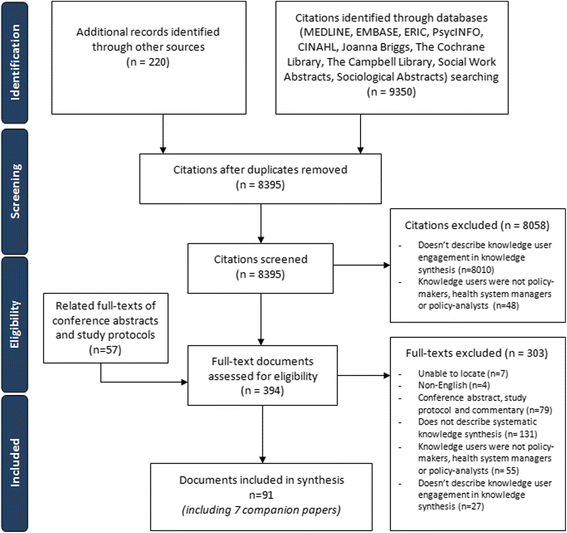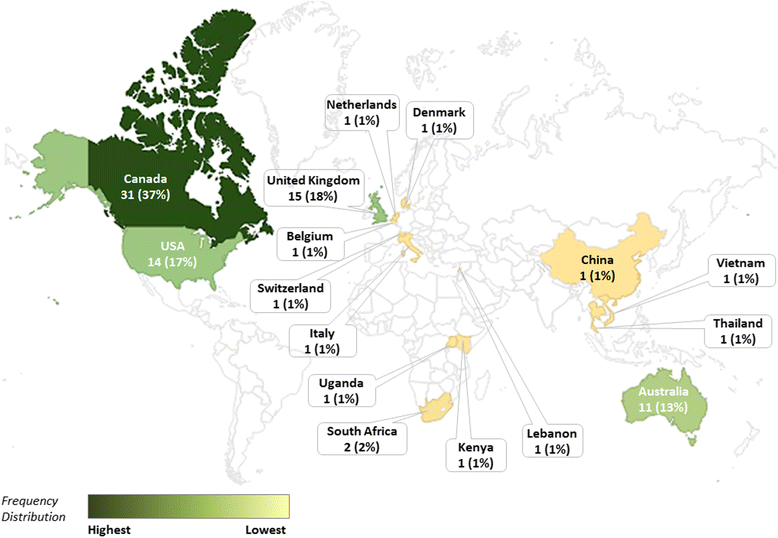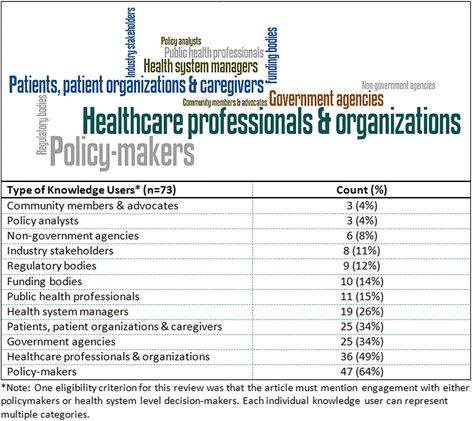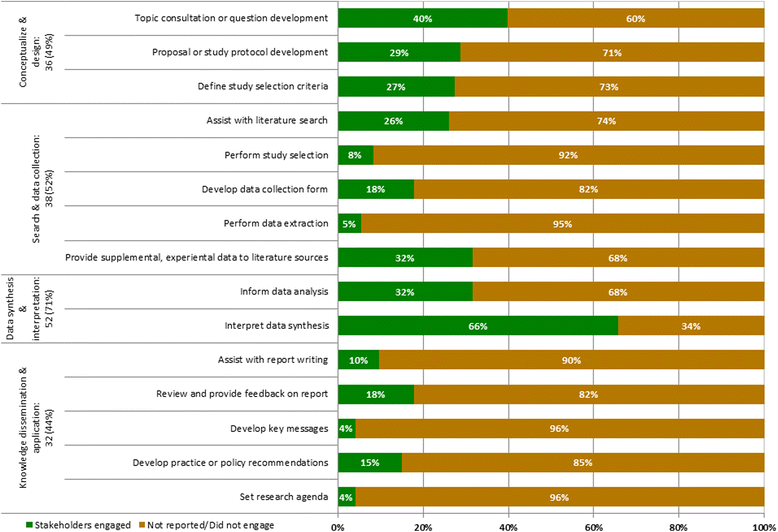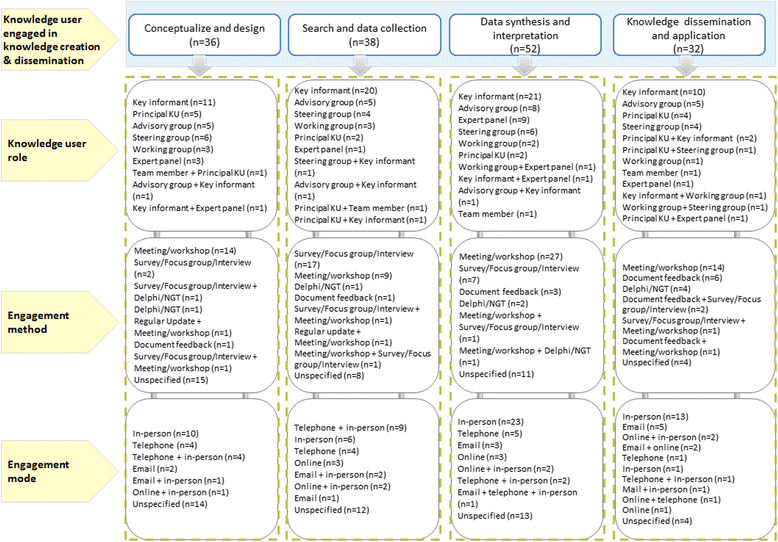Engaging policy-makers, health system managers, and policy analysts in the knowledge synthesis process: a scoping review
- PMID: 29433543
- PMCID: PMC5809959
- DOI: 10.1186/s13012-018-0717-x
Engaging policy-makers, health system managers, and policy analysts in the knowledge synthesis process: a scoping review
Erratum in
-
Correction to: Engaging policy-makers, health system managers, and policy analysts in the knowledge synthesis process: a scoping review.Implement Sci. 2018 Apr 16;13(1):56. doi: 10.1186/s13012-018-0749-2. Implement Sci. 2018. PMID: 29661227 Free PMC article.
Abstract
Background: It is unclear how to engage a wide range of knowledge users in research. We aimed to map the evidence on engaging knowledge users with an emphasis on policy-makers, health system managers, and policy analysts in the knowledge synthesis process through a scoping review.
Methods: We used the Joanna Briggs Institute guidance for scoping reviews. Nine electronic databases (e.g., MEDLINE), two grey literature sources (e.g., OpenSIGLE), and reference lists of relevant systematic reviews were searched from 1996 to August 2016. We included any type of study describing strategies, barriers and facilitators, or assessing the impact of engaging policy-makers, health system managers, and policy analysts in the knowledge synthesis process. Screening and data abstraction were conducted by two reviewers independently with a third reviewer resolving discrepancies. Frequency and thematic analyses were conducted.
Results: After screening 8395 titles and abstracts followed by 394 full-texts, 84 unique documents and 7 companion reports fulfilled our eligibility criteria. All 84 documents were published in the last 10 years, and half were prepared in North America. The most common type of knowledge synthesis with knowledge user engagement was a systematic review (36%). The knowledge synthesis most commonly addressed an issue at the level of national healthcare system (48%) and focused on health services delivery (17%) in high-income countries (86%). Policy-makers were the most common (64%) knowledge users, followed by healthcare professionals (49%) and government agencies as well as patients and caregivers (34%). Knowledge users were engaged in conceptualization and design (49%), literature search and data collection (52%), data synthesis and interpretation (71%), and knowledge dissemination and application (44%). Knowledge users were most commonly engaged as key informants through meetings and workshops as well as surveys, focus groups, and interviews either in-person or by telephone and emails. Knowledge user content expertise/awareness was a common facilitator (18%), while lack of time or opportunity to participate was a common barrier (12%).
Conclusions: Knowledge users were most commonly engaged during the data synthesis and interpretation phases of the knowledge synthesis conduct. Researchers should document and evaluate knowledge user engagement in knowledge synthesis.
Registration details: Open Science Framework ( https://osf.io/4dy53/ ).
Keywords: Engagement; Health policy; Health system; Knowledge synthesis; Knowledge translation; Knowledge user; Policy-maker; Policy-relevant; Stakeholder.
Conflict of interest statement
Ethics approval and consent to participate
Since this is a scoping review, ethics approval was not required.
Consent for publication
Not applicable.
Competing interests
SES is an Associate Editor of the journal but was not involved with the submission process or decision to publish. All other authors declare that they have no competing interests.
Publisher’s Note
Springer Nature remains neutral with regard to jurisdictional claims in published maps and institutional affiliations.
Figures
References
-
- CIHR . Glossary of funding-related terms Canada: Canadian Institutes for Health Research. 2017.
-
- CIHR . Knowledge user engagement: Canadian Institutes of Health Research. 2016.
Publication types
MeSH terms
Grants and funding
LinkOut - more resources
Full Text Sources
Other Literature Sources
Medical

